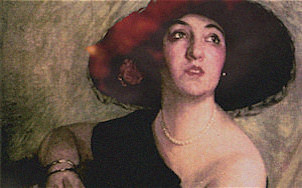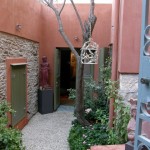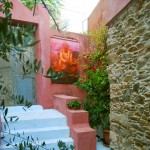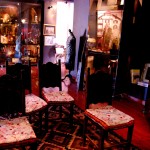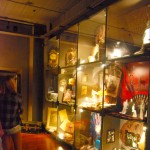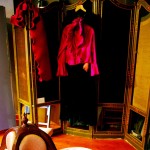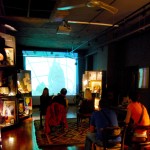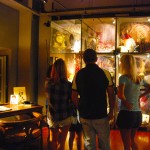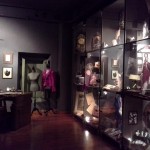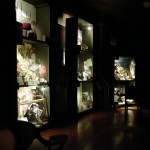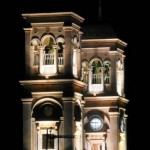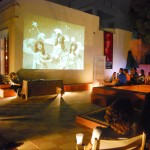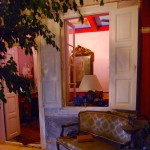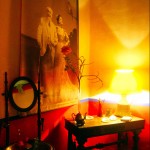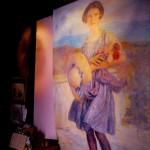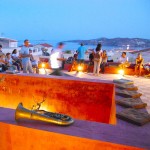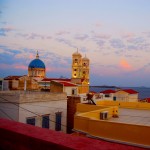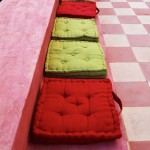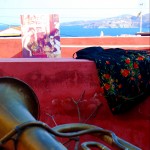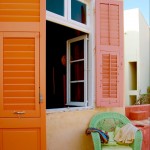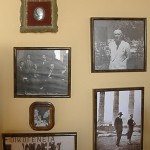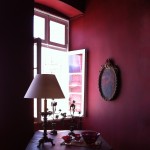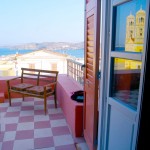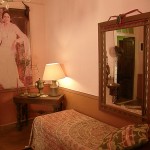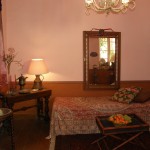“Kyveli Mansion” and the main “Exhibition Space” are two buildings in Hermoupolis, Syros hosting the Institute’s “Research, Documentation and Residence Centre”.
Kyveli Mansion
“Kyveli Mansion” is an untypical three-storey upper-middle-class house in the aristocratic quarter of Hermoupolis in Syros. Built in 1870, its back is firmly planted in the rocky hillside while the front faces to the sea and the rising sun, the dark of the night being powerfully pierced, since 1844, by the first ever lighthouse built in the Aegean Sea.
The house was built during the heyday of industrial and commercial Hermoupolis, demographically and socially rejuvenated by the emigration of commercially and industrially advanced populations from Chios and other islands of the Aegean. They built a naval yard and leather factories, they traded between the Russian and the Ottoman Empires and the entire Mediterranean Sea, crossing the Atlantic to import leather and reselling the fabricated product to all Europe. They built a theatre in imitation of the “Scala” at Milano, they minded the precious water, they were hardheaded and exuberant.
The house has air ducts for summer freshness, a deep well in the front court and a large water tank carved in the rock below the kitchen. Today it houses the legacy of a great theatrical family, founded by Kyveli and Mitsos Myrat. They first brought their talents to Syros in 1904, leading the “New Stage” of Konstantinos Christomanos.
The house is full of photographic material, letters and clothes, both theatrical and civic, furniture and memorabilia, portraits and documents, illustrating the turbulent course of the early part of the “brief” 20th century.
“Kyveli Mansion” can also provide hospitality to personalities and researchers involved in the Institute’s various activities.
Exhibition Space
Adjacent to “Kyveli Mansion”, this building mainly houses the “20th century Panorama”, including exhibits relating to the historical, political and artistic affairs of the period based on the life of actress Kyveli and her family.
The audiovisual “20th century Panorama” arose from the need to preserve memories for future generations as the only way to compose and maintain an identity and it is designed along three axis:
A. Thematic Axis covering Theatre and Culture,
B. Chronological Axis covering three centuries of history, and,
C. Geographic Axis covering the Aegean Sea and the Greeks of the Diaspora.
It aims to put into context the congruence of time and space, here and now, there and then using cutting-edge technologies with virtual, interactive and multimedia applications, approaching Theatre, History and the Diaspora Greeks as a single, cohesive and integrated unity.
The “Exhibition Space” consisting of a Main Hall, a Studying Area and an Open-air Area, provides all required technical and technological equipment in order to fulfil the elevated needs for the organisation of world-class exhibitions, conferences, workshops, educative programmes and cultural events in general.
The “Kyveli Institute” Archive is an integral part of the Institute’s entire effort and its improvement and promotion a major objective. For this reason, a number of research programmes are underway and will culminate with the creation of a database and with the publishing of the Institute’s monographs. The first such monograph to be published will focus on Kyveli herself. In addition, the Institute is constantly enriching its archive with new material, aiming at the complete mapping of the artistic endeavours of Kyveli’s family.



